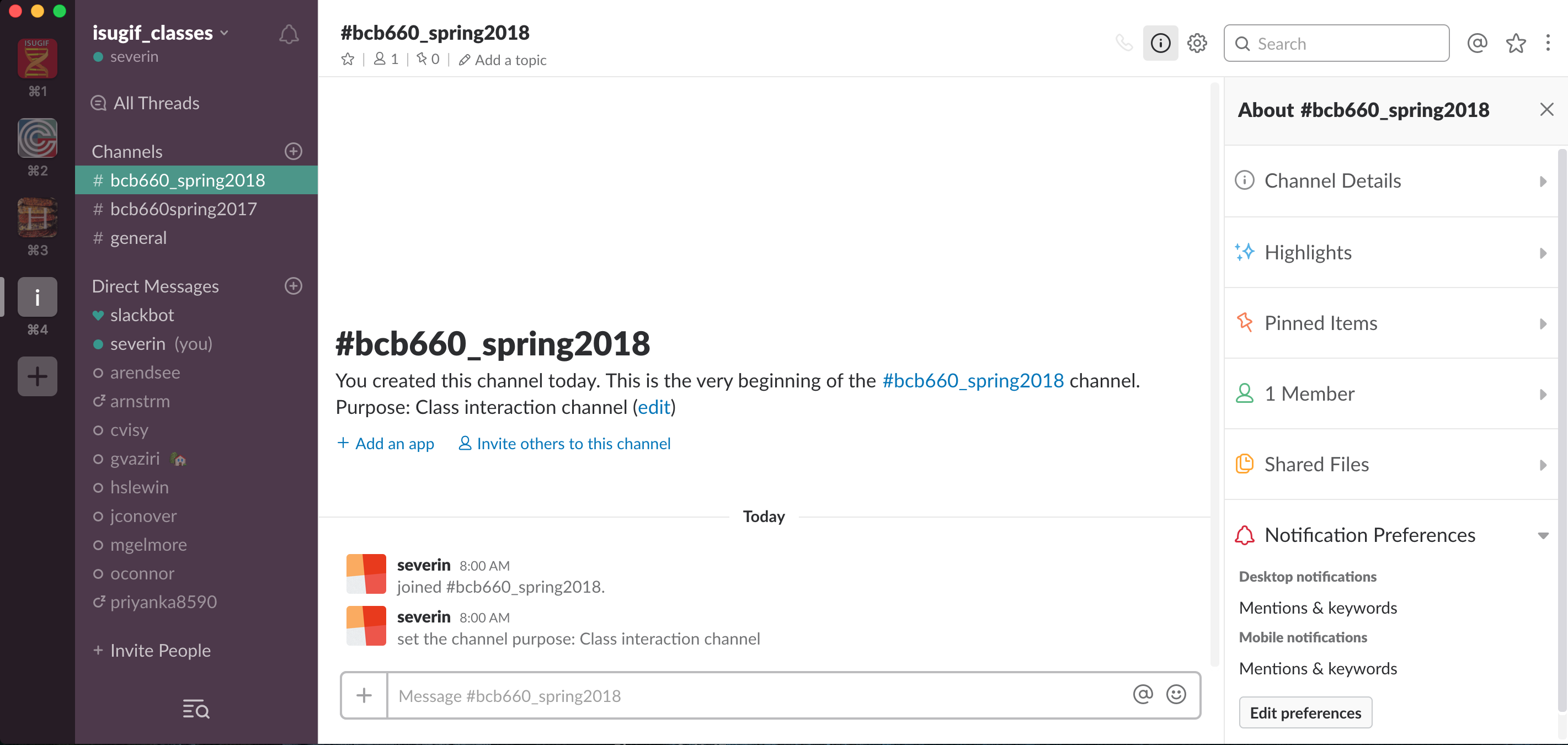Introduction
Slack is a communication platform that is based around group chat channels. It is a transcript of conversations about projects that you can go back and reread. Slack permits, text, images and files to be attached during conversation.
Downloading Slack
- You can sign up for slack here: signup
- The free version the slack program can be downloaded here: program
- Create your own team using this link: Team signup and get a $100 credit.
Understanding the GUI interface

The thin left panel has the teams that you have joined. The thick left panel contains the channels that you can select and chat in. The central panel contains your messages, allows you to upload files and make posts. The right panel contains highlights, pinned items, members in the channel, and shared files. It will also display search results if you search using the search box at the top of the right panel.
Tips and Tricks for successful Slack experience
- You can create a snippet by clicking on the + symbol to the left of the text entry box
- Hold shift (on macs) and hit enter to get a new line without submitting the text
- Up arrow can be used to quickly edit your last post
- #Hash #tag #everything, that way when you search you can search with the hash to find what you want
- the symbol on the right next to the search bar that is a circle with an i in the middle will get you back to channel contents (highlights, pinned items, files etc)
- Pin important posts and documents and results
- if someone forgot to hash you can post right after them and hash for them, it will get searchers close to the post
- While searching click on the time/date to take you to archived posts
- Don’t forget to Hash everything
- You can copy a previous post to quote it by copying its link and including it in the next message you write
Why do some people hate Slack?
Recently had a conversation with a two individuals that I highly respect one running a bioinformatics core and the other a PI running a lab. Both didn’t like Slack but really wanted to. Based on their common experience, here is a short list of reason why you and your group may not need Slack to increase communication.
- There are fewer than 4 people in your group with an imbalance in knowledge.
Here is the logic. Slack if implemented well means less frustration for new members of a group or experienced members trying out an unfamiliar protocol that someone in the group knows well.
Example 1 Person A is working on a problem and spends an hour banging his/her head against the wall. Person A asks in Slack if anyone has overcome this problem. Person B replies with “Oh yeah, I hate that, see this documentation here or try this.”
Example 2 Person A is just starting a new problem and doesn’t want to try to figure it out so just asks on slack exactly how to do it. Person B spends lots and lots of time explaining step by step how to solve the problem that Person A is capable of doing with a little effort.
In Example 2 above, Person B will hate slack as this individual will not be able to get anything of their own work done but will be constantly answering questions.
More Slack Resources
Further Reading
Resource ManagementData Management
Open Science policy
FAIR principles
CARE principles
TRUST principles
Data Management Plan (hands-on)
Code Development & Management
Storage & Version Control
GIT - a distributed version control system
GIT Commands
Online hosting platforms for GIT repositories
Introduction to GitHub
GitHub - getting started
GitHub - getting started (class exercise)
Introduction to BitBucket
Documentation improvement tools
A Practical guide to managing research documentation
Tools for research documentation
Tools for code documentation
Introduction to Markdown
Quality Assurance
Project Closing
